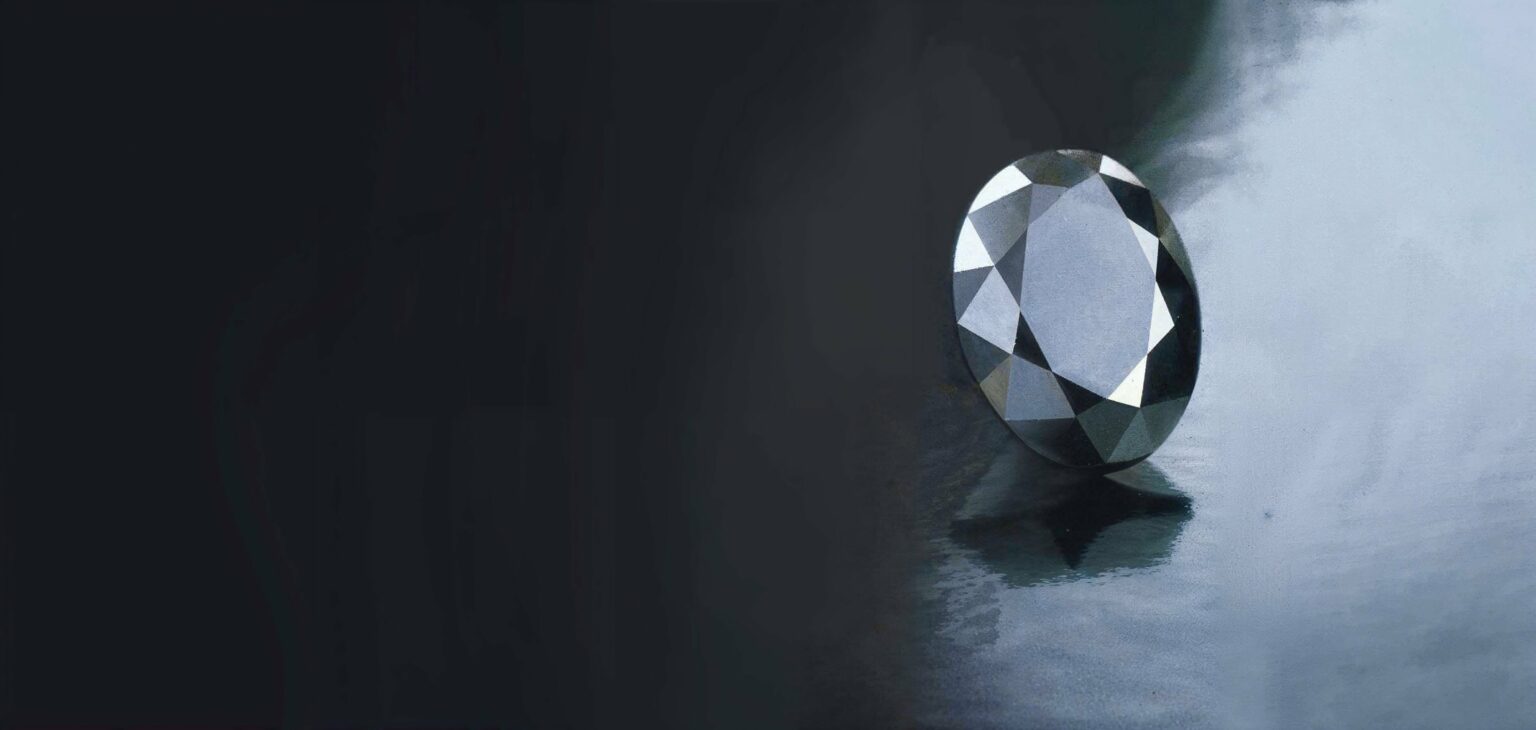Remember those sappy 1986 headlines about a hulking 1,905-carat Idaho star sapphire supposedly purchased for $10 at a gem show and later found to be worth millions? In a nation where playing $2 lotteries earns millions, this serendipity saga had just the right air of long-shot plausibility to qull even the most hard-boiled and cynical of editors. Mainly because it involved gems.
Alright, alright, you say, so media people are suckers for gem scams. Tell us something we didn’t know. OK, trade press people are just as easily bamboozled by dealer hype. Just look at how Israeli treater Zvi Yehuda made chumps of even the most seasoned editors in 1991 with a 54.36-carat heart-shaped black diamond he claimed was worth a rapturous $2 million. Jewelry publications everywhere took this claim at face-value, although simple fact-checking would have revealed its preposterousness.
In December 1990, the most celebrated black diamond ever, the 67.50-carat cushion-cut Black Orlov (whose grandiose bio—discovery in India, setting in a Hindu idol and ownership by a Russian princess—is now questioned) fetched a meager $99,000, a mere $1,466 per carat, at Sotheby’s New York. This is $1.9 million less than Yehuda’s suggested value for his smaller, totally unknown stone. Yet given the fact that black diamonds routinely sell at wholesale for between $300 and $800 per carat, the Black Orlov’s provenance counted for something. After all, fine stones with no grandiose history or hype-worthy story line are lucky to get $1,200 per carat.
Mind you, these are prices for standard sizes. Large stones tend to fetch far less, no matter how nice. For instance, a top-caliber 50-carat fancy shape, cut in 1991, had a just-off-the-wheel asking price of $1,000 per carat. That’s dreaming for black behemoths without provenance.
Instant provenance is, of course, what Yehuda wanted for his stone. But that’s hard to garner for black diamonds since black is the least regarded of all the diamond’s crayon-box array of colors. “In terms of appearance, finish and price, you’re better off with black onyx,” a cutter quips. For the most part, he’s right. Despite the fact that black diamonds are abundant in rough form, there are exceedingly few top-grade finished stones. Why is there a perpetual dearth of fine finished black diamonds?
Topsy-Turvy Mystique
To the common man, diamond is simply the purest form of matter—carbon transformed by unimaginable heat and pressure into a colorless, crystalline gem material of blinding brilliance and peerless hardness. In recent years, the buying public has become aware that when nature adds a dash of chemical impurities like boron and nitrogen, or prolonged doses of natural radiation, they act as coloring agents. So consumers have learned to aspire to diamonds that are pink, blue, yellow and, now, “champagne.”
Oddly, the fact that many diamonds are gunmetal gray to coal black is still a trade secret. Understandably so. Aesthetic ideals for black diamonds are the antitheses of those of every other diamond color. At their best, these stones are jet-black instead of icy white, totally opaque instead of crystal clear, reflective instead of radiant. “What you want from black diamonds are strong reflections of light off a shiny, polished, completely dark surface. Any area of transparency is considered an imperfection,” says Alan Bronstein, Aurora Gems Inc., New York.
Unfortunately, few black diamonds boast ideal appearance. “Most,” Bronstein continues “are pitted with open crevices and almost never totally opaque.” The pits are obvious at a glance. But spotting transparent areas, reminiscent of a mirror stripped in places of its metallic backing, may require inspection under a strong light.
There’s not much a cutter can do to hide these transparent areas because they stem, ironically enough, from a deficiency of inclusions within the stone. Pitting, as well, is usually unavoidable, a consequence of the fact that black diamonds are incredibly difficult to cut, and polishing can take the better part of a year.
Carbon vs. Graphite
The exact genesis of black diamonds isn’t known. Gemologist Stephen Hofer, Colored Diamond Laboratory Services, Miami, theorizes that black diamonds lack the homogeneous arrangement of carbon atoms we’re used to in the colorless variety. Rather, they mix carbon atoms in different crystal phases (i.e., diamond and graphite) due to fluctuating pressure and temperature during the gem’s formation in the earth.
When carbon takes only diamond form, it transmits all the wavelengths of light in the visible spectrum. But when it takes graphite form, it absorbs all the wavelengths of light in the visible spectrum. Thus graphite-laden diamonds are essentially black, although rarely entirely so.
But what Hofer calls a “mishmash” of carbon and graphite atoms does more than make diamonds swallow light. It also robs them of uniform crystallography. This attribute makes cutting them friendishly frustrating and time consuming.
Given that difficulty, as well as low retailer appreciation for them, black diamonds are a rare sight in jewelry. But they are hardly rarities. Specialists in industrial diamonds see them regularly. However, relatively few of these stones find their way on to a cutter’s wheel. One notable exception, a 55.85-carat rough bought for a few hundred dollars in 1972, became a now-famous 33.74-carat pear shape known as the Amsterdam.
Alas, few black diamonds achieve stardom. Most aren’t worth the bother to cut since the end result usually doesn’t have the sleek finish and even color of vastly cheaper black onyx. Worse, many earmarked for cutting are so included they literally go to pieces on the wheel.
To compensate for the lack of even-colored, smooth-surfaced black diamonds, some dealers irradiate green diamonds for extra-long periods of time so that stones have ebony-like color. This is cricket as long as stones are safe and treatment is disclosed.
Early in 1992, however, European rough dealers were deluged with several hundred roughs “darkened in a reactor to cover up heavy piques and cracks,” says Martin Cooper, director of Research and Development at De Beers’ Research Centre in Maidenshead, England, None of them was disclosed as treated, although many had radioactivity levels that exceeded every legal limit in the world. Of use for novelty items. not jewelry, these overheated roughs were quickly rounded up and sent to cool off for several years in quarantine.
Please note: this profile was originally published in 1988 in Modern Jeweler’s ‘Gem Profiles: The First 60’, written by David Federman with photographs by Tino Hammid.
The 1.36-carat black diamond shown in the header is courtesy of International Jewelry Creations, New York.




